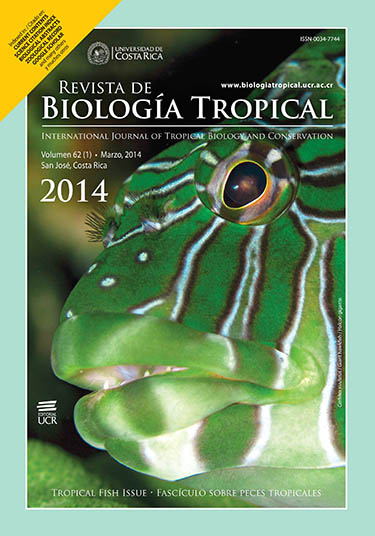Resumen
La partición aditiva de la diversidad de especies es un enfoque prometedor para el análisis de los patrones de diversidad en las comunidades de moluscos, especialmente su distribución espacial. Nuestros objetivos fueron evaluar la distribución de las comunidades de moluscos en los arroyos en el Sur de Brasil, y evaluar la partición de diversidad de la comunidad en diferentes escalas espaciales. El muestreo se llevó a cabo en cuatro cuencas del curso inferior del río Toropi, Brasil. Todas las especies encontradas, y también la comunidad en su conjunto mostraron una distribución agregada. La partición aditiva de la riqueza de especies mostró que la riqueza observada en menor escala (α=dentro de los arroyos) representó el 20.7%, y entre los arroyos (β1) representó el 10.5% de la riqueza total. La riqueza y diversidad de Shannon observadas en escala alfa (α=dentro de los arroyos) fueron mayores que las observadas en el primer nivel de escala de la diversidad beta (β1=entre los arroyos). La mayor variación en las grandes escalas de análisis, con la participación de los componentes entre-órdenes y entre-microcuencas (β2 y β3, respectivamente) fue la esperada, ya que el aumento de la distancia conduce a mayores diferencias de riqueza (mayor diversidad beta). En conclusión, nuestros resultados muestran que la dispersión agregada tuvo influencia en la partición de la diversidad de las comunidades de moluscos en los arroyos estudiados. Los métodos de dispersión y tolerancia a las variaciones de los factores abióticos también juegan un papel importante para determinar la diversidad alfa. Así, la conservación de los arroyos a nivel local contribuirá a la conservación de la cuenca y al mantenimiento de la diversidad regional (gamma).


